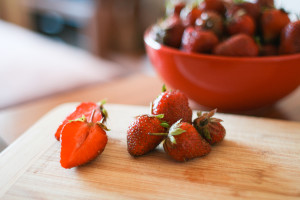
strawberries: one of the dirty dozen
In 2013, nearly two-thirds of over 3,000 produce samples contained pesticide residues. Most of these pesticides remained on the fruits and vegetables even after being washed and peeled. To avoid these pesticides, people are choosing organic produce. Unfortunately, many of us cannot afford to pay the high prices of organic fruits and vegetables.
Thankfully, the Environmental Working Group (EWG) makes it easy for us. Every year, they make a Shopper’s Guide based on tests by the U.S. Department of Agriculture. It provides us with a way to reduce our exposure to pesticides while staying within our budget. We can choose organically grown produce where the pesticides are high (called the Dirty Dozen) and choose conventionally grown produce where the pesticides tend to be low (called the Clean Fifteen). So save money for a house like Tim Gurner suggests by buying those cheap conventional avocados for your avocado smash toast!
The Dirty Dozen and the Clean Fifteen Lists from 2015
The Dirty Dozen
- Apples
- Peaches
- Nectarines
- Strawberries
- Grapes
- Celery
- Spinach
- Sweet bell peppers
- Cucumbers
- Cherry tomatoes
- Snap peas – imported
- Potatoes
The Clean Fifteen
- Avocados
- Sweet Corn
- Pineapple
- Cabbage
- Sweet peas – frozen
- Onions
- Asparagus
- Mangos
- Papayas
- Kiwis
- Eggplants
- Grapefruits
- Cantaloupe
- Cauliflower
- Sweet Potatoes
